It was an early spring evening in 1999, in central New York. I was doing what I did most evenings back then, sitting quietly on the bank of an active beaver pond with a VHS camcorder in hand, waiting for whatever wildlife might stroll by. Off in the distance I could hear a pack of coyotes (Canis latrans), a chorus of high-pitched barks and yips. I decided to call back with the best coyote howl I could muster. And to my amazement I got a response, not from the pack in the far-off distance, but from another unseen coyote only about 25 yards behind me. Thoroughly creeped out, chills running down my spine, I packed it in and swiftly headed home, but that eerie moment will stick with me for the rest of my life. Every encounter I’ve ever had with a coyote, either audibly or visually, is a moment I remember and cherish.
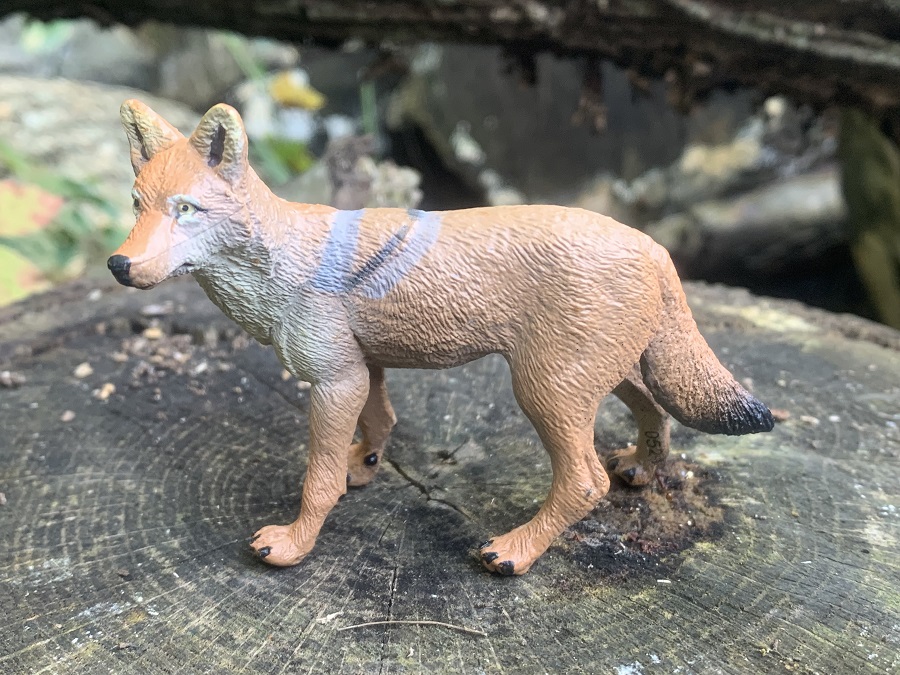
Thanks to encounters like the one above, coyotes are among my favorite animals. They’re tough, adaptable, elusive, intelligent, and bring a touch of wilderness to even the most urban settings. Since the arrival of Europeans to North America a war has been waged against the continent’s native, apex predators. And by-in-large, we’ve won that war. Most of those animals are now restricted to small pockets of their former ranges. But despite being equally persecuted, coyotes have only increased in population and have expanded their range. As a result, coyotes are now the only apex predators in many of the places once home to wolves, cougars, and bears. Coyotes feed on a variety of prey, including various invertebrates, amphibians, reptiles, birds, rodents, rabbits, and other mammals up to the size of adult deer, as well as occasional fruit and other vegetation.

Today we’re looking at the 2010 Safari Ltd. coyote, part of their North American Wildlife line. There aren’t too many coyote figures out there. Coyotes don’t enjoy much popularity despite their abundance. Safari produces what I would consider the only collector quality coyote figures. This one and a 1/10 scale figure for their Wild Wildlife line.

The Safari coyote measures about 3.5” (8.89 cm) from snout to tail and stands about 1.75” (4.4 cm) tall at the shoulder. The actual coyote, also known as the brush or plains wolf, was once restricted to the American southwest and great plains but now lives throughout North America, from Alaska south into Central America, and from coast to coast. There are 19 sub-species, and they range in size from 20-40 lbs. (9-18 kg) with the largest coyote ever reported weighing in at 75 lbs. Excluding the tail, they generally have a body length of 3-4’ (0.9-1.2 meters) which puts the Safari figure at about 1/18 in scale.
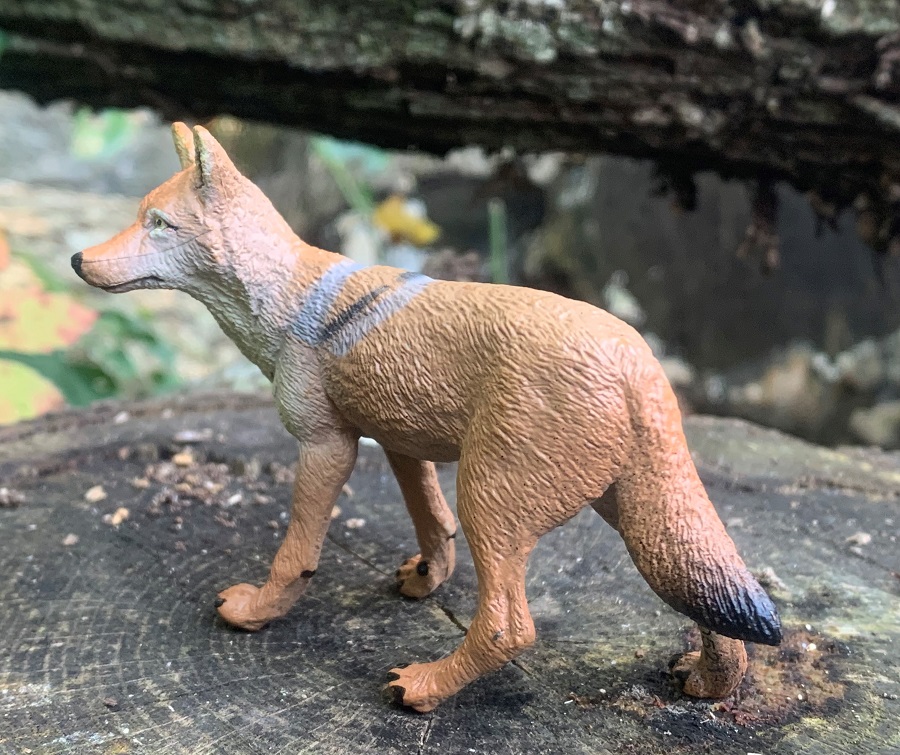
The Safari coyote is presented in a static pose with the head looking leftward. Coyotes look very much like small, slim wolves, and that is properly conveyed here. The figure has larger ears, a narrower snout, and thinner frame that a wolf ought to. Interestingly, coyotes in eastern North America are actually coyote X wolf hybrids. As coyotes moved from west to east, and wolves were extirpated from the east, the coyotes bred with the remaining wolf population. These eastern coyotes, or coywolves, are larger than their western counterparts, weighing 44-55 lbs. (20-25 kg) on average.

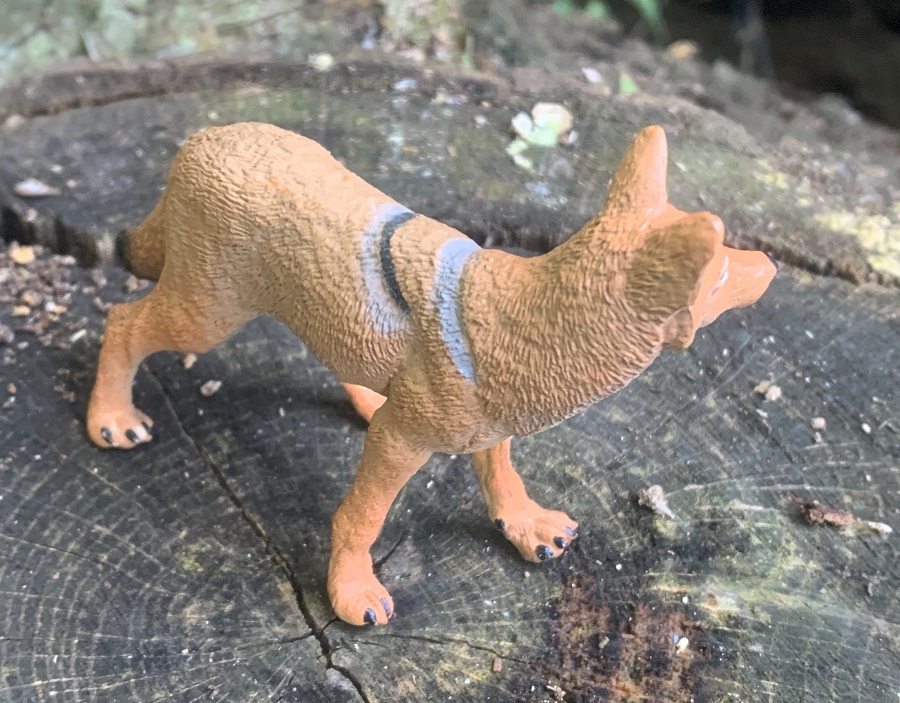
This figure is sculpted by Safari’s premier sculptor, Doug Watson, so you know you’re getting a well-researched and quality figure. I particularly like the well defined musculature on the legs and the nicely executed coat of fur across the sculpt. Being over a decade old however, the figure is starting to show its age. There’s a visible seam line running across the face and the paws are somewhat distorted looking, possibly a byproduct of frequent mold use over the years. The quality of paint application can also vary. More on that later.
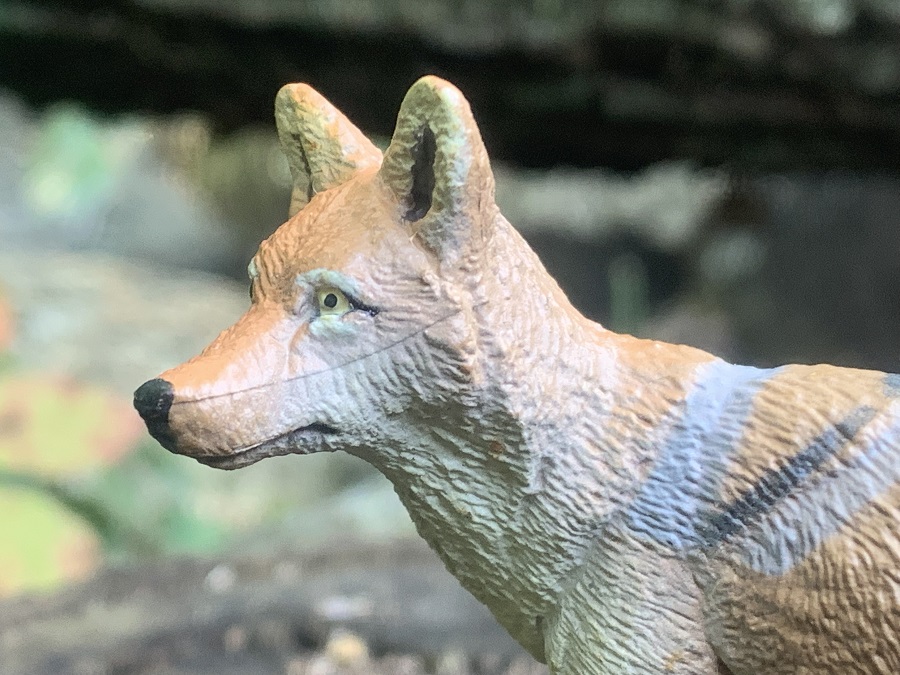
Coyotes come in a range of colors, from black and various shades of gray, to red or fulvous. Coloration typically coincides with the habitat a particular population is found in. Coyotes are found within every habitat in North America, from mountains and coasts, to deserts, forests, farmland, and even the most developed urban environments. This figure could be described as fulvous, or dull orange in color with a pale underside.
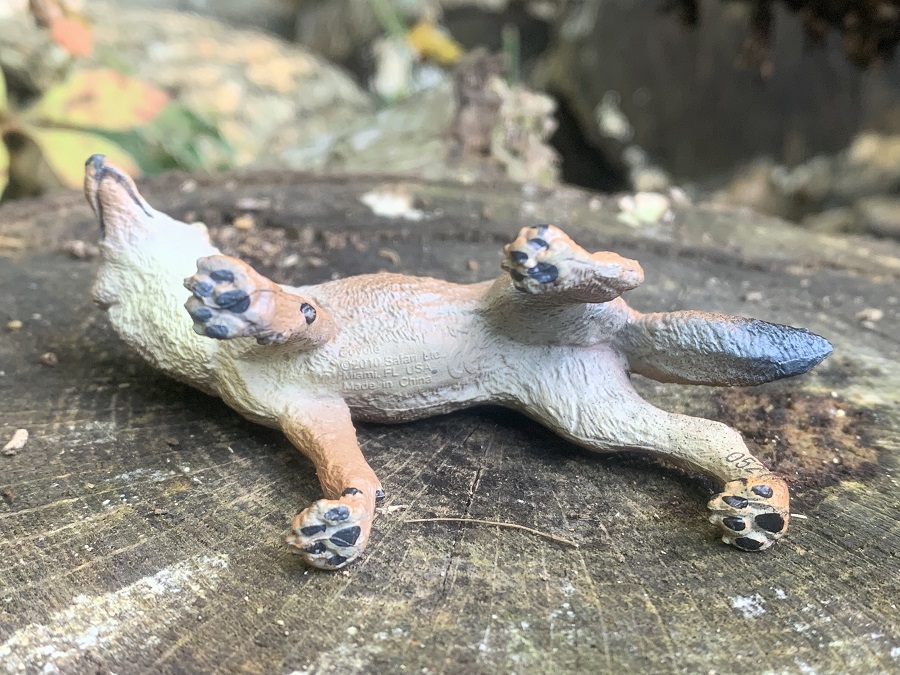
The inside of the thighs and tail tip are gray, and the nails, mouth, and snout are black. Two gray swaths are painted running up and over the shoulders with a black swath painted between them. The inside of the ears are gray, and the eyes are yellow with black pupils and white eyebrows. The toe pads are gray but the paint application on them is poor.
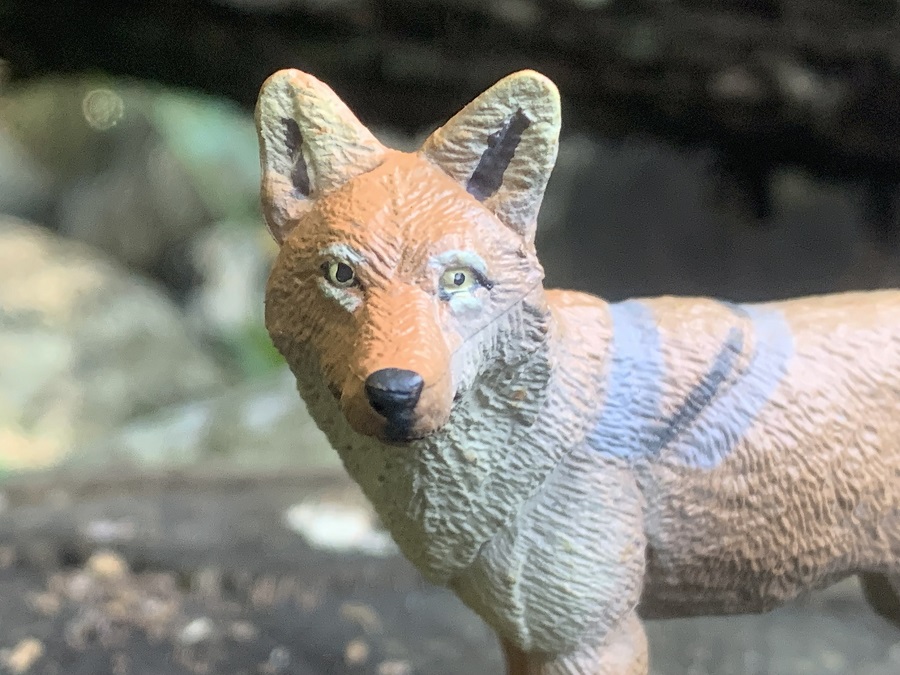
Speaking of paint application, a word of caution. I was fortunate enough to find this toy “in the wild” and the store had an ample stock of individual figures to look through. This was good, because all of them had wonky, misaligned pupils of varying sizes. I think I looked at 7 figures and was able to choose the best from an otherwise bad batch. If you’re buying this figure online, buyer beware.
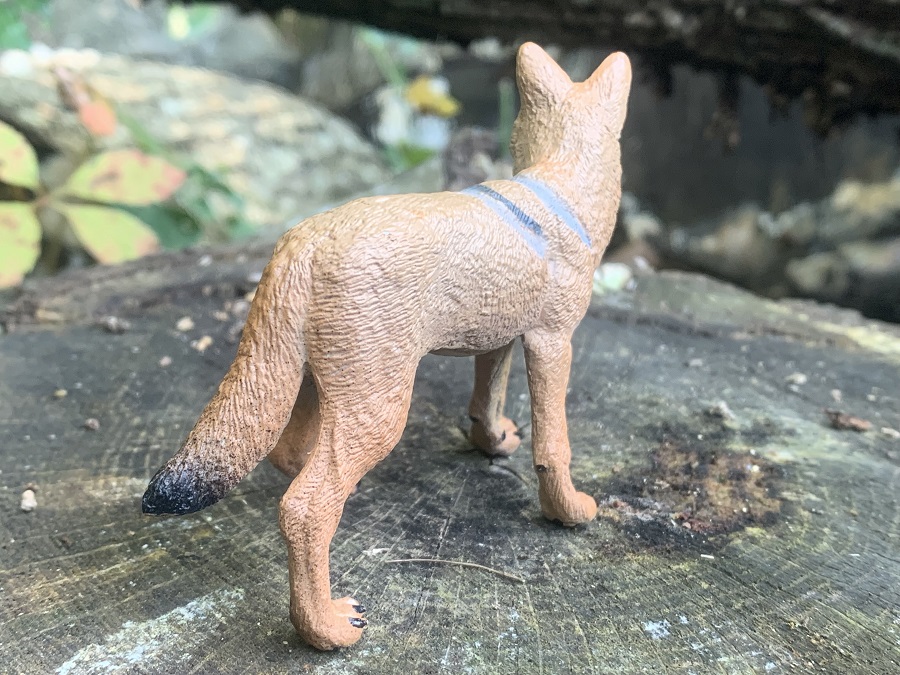
Coyotes are a controversial animal that are sure to generate passionate and heated reactions wherever they’re brought up. It seems like people either love them or hate them, but I will say this, the people that hate them are generally those the least well informed about them. Coyotes, their ecology, behavior, evolution, adaptability, and folklore are subjects I can talk about all day but alas, this is a toy review and we’ve about run our course.

If you would like to add this enigmatic canine to your collection, then I wholeheartedly recommend the Safari Ltd. coyote. It’s a figure that’s starting to show its age, and watch out for those eyes, but it does its job of representing the ‘yote well. This figure is still in production and retails for about $5-6.
Disclaimer: links to Ebay and Amazon on the AnimalToyBlog are affiliate links, so we make a small commission if you use them. Thanks for supporting us!




Thank you for this excellent review or what should be a homerun figure for Safari. In truth, I have more than one in my collection, and one of them is exemplary in every way – pupils aligned, no misapplied paint, legs straight, paws stable, and striking, bold color. Then I have another, with none of those attributes. Someday, I’ll repaint that one. I used to offer this figure repainted and “wonky-legs corrected” through my store because the sculpt is just so dang gorgeous. Safari needs to add some more Coyotes to the North American Wildlife collection. Thank you for shining the spotlight on this often maligned species and overlooked figure!
Apparently it’s a thing where early production runs of a figure are better than later ones. So perhaps your good one if from an earlier run and the other from a later, like mine. I agree, we need more coyotes. Thanks for the kind comment!